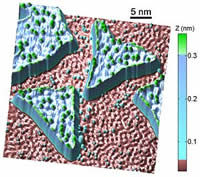NEMO Project: 11 Partners Conduct Research on New OLED Materials
German Federal Ministry of Education and Research (BMBF) is supporting the research project “New materials for OLEDs from solutions” (NEMO)
Merck KGaA announced that it has launched a project called "New materials for OLEDs from solutions" (NEMO) together with partners from industry and science. The objective of this project, which is being co-funded by the German Federal Ministry of education and Research, is to develop innovative, soluble materials for use in large-area organic light-emitting diode (OLED) components for devices such as televisions, electronic traffic signs or lighting systems. The total budget amounts to around € 32 million.
The NEMO project, which is being funded until the end of July 2012, involves four industrial companies and seven academic partners. Merck is leading the consortium. The three other participating companies are H.C. Starck Clevios GmbH, Ormecon GmbH and DELO Industrie Klebstoffe GmbH & Co. KGaA. The Fraunhofer Institute for Applied Polymer Research is taking part in NEMO as an independent research organization. The University of Tuebingen and the University of Regensburg are both represented with two chairs each. Further university partners are Humboldt University of Berlin and the University of Potsdam.
The costs of the NEMO project are expected to total € 31.8 million. Within the scope of the promotion program called “Material Innovations for Industry and Society,“ the BMBF is providing funding of € 16 million. The industrial companies will finance the remaining expenses on their own. The project is thus one of the flagship projects of the BMBF promotional initiative “Organic Light-Emitting Diodes – Phase II“.
An OLED is a solid-state semiconductor device composed of thin films of organic molecules that create light when electrical current is applied. The main difference to inorganic light diodes (LEDs) is their lower current density and laminar light density and the fact that no crystalline materials are required. OLEDs are already being used in small-surface displays. OLEDs emit light of different colors when electrical current is applied. They consume little energy and offer sharp images from every viewing angle. By using ultra-thin luminescent layers, OLED technology makes it possible to produce unique, large-surface homogeneous lighting surfaces with a total layer thickness of just a few millimeters. Compared to the vacuum evaporation process used today, these new materials should significantly improve scalability and coating efficiency in particular. To this end, the NEMO project partners are focusing on soluble phosphorescent materials for red, green and blue applications. In order to develop marketable solutions quickly, different injection, transport and electrode materials as well as adhesives are being researched, evaluated and tested in parallel for their performance.
Most read news
Organizations
Other news from the department science

Get the chemical industry in your inbox
From now on, don't miss a thing: Our newsletter for the chemical industry, analytics, lab technology and process engineering brings you up to date every Tuesday and Thursday. The latest industry news, product highlights and innovations - compact and easy to understand in your inbox. Researched by us so you don't have to.


























































